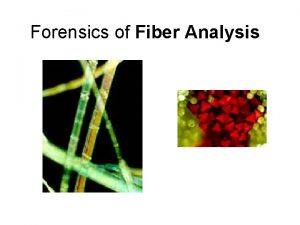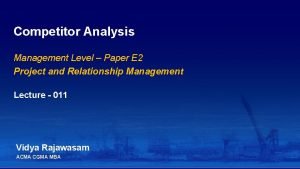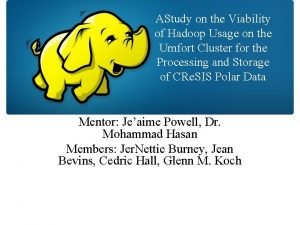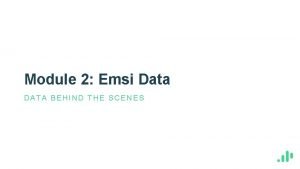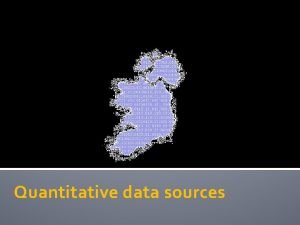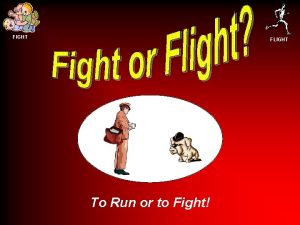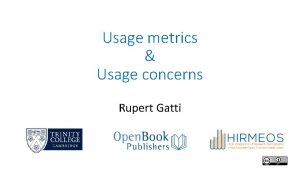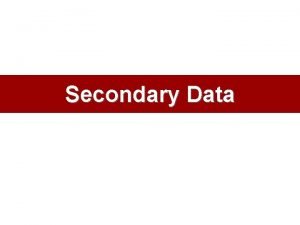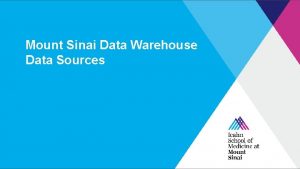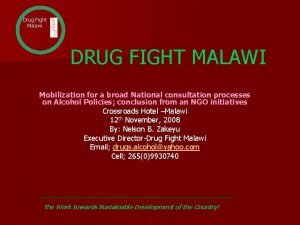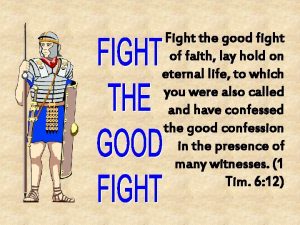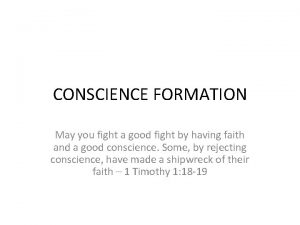Sources of usage data gathered in the fight














- Slides: 14

Sources of usage data gathered in the fight to control mosquitoes in Lee county, Florida 1 Ed Foley Manager, mosquito control.

2 About LCMCD Lee County is located in southwest Florida Over 56, 000 acres of salt marsh habitat LCMCD established in 1958 Largest mosquito control district in the state of Florida Comprehensive IMM program Larviciding and adulticiding Ground aerial capabilities

3 Sources of usage data Recently, the EPA reached out to AMCA to gather usage data from mosquito and vector control programs across the US. LCMCD submitted usage data at this time Best way for EPA to gather usage data from mosquito control districts. This presentation to focus on wide area public health spraying for adult mosquitoes Ground applications Aerial applications Nuts and Bolts of some of the submitted usage data Ultra Low Volume spraying

Ground Adulticiding 4 13 ground adulticiding vehicles Spray time: sunset through 2 am Compressor driven Ultra Low Volume spray units Variable flow system between 2 mph and 20 mph Spray units are all controlled via a handheld unit inside of vehicle cab. Data captured GPS Spray on/off Acres treated Amount of product sprayed

ULV truck data 5 180 000 160 000 140 000 100 000 2018 80 000 10 yr Avg 60 000 40 000 20 000 Majority of applications are from June to October Wet/dry season Adulticiding activity follows rainfall/tide be r D ec em em ov N O ct ob be r er r be em pt Se gu st Au ly Ju ne Ju M ay ril Ap ch M ar ry ua Fe br nu ar y 0 Ja Acres Treated 120 000

ULV truck data (2018) 6 Product Bio. Mist 31 -66 Delta. Gard Fyfanon ULV EPA Reg Number 8329 -43 432 -1534 67760 -34 Active Ingredient Permethrin Deltamethrin Malathion Application Rate 0. 003 gal/ac 0. 005 gal/ac Acres Treated 2, 933. 4 5, 531. 5 41, 944. 10 Total Technical Material 5. 05 25. 38 212. 82 Kontrol 30 -30 73748 -5 Permethrin 0. 003 gal/ac 601, 504. 92 1, 492. 11 3, 730. 28 30 Pyrocide 7067 1021 -1199 Pyrethrin 0. 005 gal/ac 6, 038. 4 24. 68 9. 095 5 300’ swath On average we treat ~600, 000 acres annually by ground Average droplet size: Dv 0. 5 11. 71 μm Dv 0. 9 18. 79 μm Total lbs AI 14. 443 4. 315 2, 106. 92 Percent AI 31. 28 2 96. 5

7 ULV truck data (2018) Total number of ground adulticide treatments in year Average number of acres adulticided per ULV truck driver per treatment Average amount of chemical applied per treatment Average Number of times a zone was treated Max number of times a zone was treated Biomist 31 -66 Permethrin 6 488. 90 0. 84 3 3 Delta. Gard Deltamethrin 7 790. 21 3. 63 1 1 Fyfanon ULV Malathion 44 953. 28 4. 84 1. 6 4 Kontrol 30 -30 Permethrin 621 980. 20 2. 43 3. 7 12 Pyrocide 7067 Pyrethrin 8 754. 80 3. 09 1 1 On average we treat the same site 5 times per year. In 2018 the max number of times a site was treated was 12 times.

8 Aerial Adulticiding 4 fixed wing airplanes 1 helicopter Treats up to 23, 000 acres per plane Naled and malathion Spray between 9 pm and 2 am Pilots use night vision goggles Onboard precision guidance system Predetermined spray missions Automatically turns systems on/off GPS data of location with spray on/off

Aerial Adulticiding 9 500’ to 1000’ swath 130 to 150 knots depending on aircraft Spray altitude of 350’ Micronair AU 4000 atomizers Average droplet size Dv 0. 5 31. 11 μm Dv 0. 9 59. 34 μm Application Rate Acres Treated Total Technical Material Total lbs AI Percen t AI Naled 0. 004 gal/acre 576, 703 2, 130. 01 28, 116. 132 87. 4 5481 -480 Naled 0. 005 gal/acre 551, 428. 7 2, 621. 773 34, 607. 404 87. 4 67760 -34 Malathion 0. 0106 gal/acre 25, 592. 9 260 2, 574 96. 5 Product EPA Reg Number Active Ingredient Dibrom Concentrate 5481 -480 Dibrom Concentrate Fyfanon ULV

Aerial Adulticiding 10 Number of treatments per month 2014 2015 2016 2017 2018 Average January 0 0 0 February 0 0 2 0 0 0 March 0 0 0 April 0 0 0 May 0 0 0 2 0 0 June 0 8 13 61 17 20 July 11 18 12 23 19 17 August 23 29 15 3 6 15 September 4 14 14 19 7 12 October 9 3 6 10 1 6 November 0 0 0 December 0 1 0 0 Total 47 73 62 118 50 70 Average ~1. 2 million acres treated aerially per year Since 2011, the most one geographical site was treated with aerial equipment was 12 times within one year However, on average the same site is typically treated by air 5 times in a one year period.

11 Why is it important? Registrant data doesn’t tell the entire story Need to know how products are being applied Interim risk assessment method did not take into account usage data and led to a over conservative estimates that are not realistic Worst case evaluations Max label rates with max applications allowed Assuming agricultural spraying techniques Aerosol vs deposition spraying Small amount of technical chemical spread over a large volume of area

12 Agriculture vs public health spraying Public Health Mosquito Control is very different than Agricultural Spraying. Agriculture Public Health 2+ Lbs 0. 1 Lbs Rate of carrier/acre 100 gals None Release Height < 30 feet 100 to 400 feet Typical VDM 100 to 800 microns 30 to 50 microns Time to target seconds . 5 to 4. 5 hours Treating Foliage Air column/flying insects Residual Weeks to months Hours to non detects Rate of ai/acre

13 Why is it important? 2018 NOAA NMFS Biological Opinion on chlorpyrifos, malathion, and diazinon Assumed agricultural techniques 300 μm droplets. Tank mixing Complete worst case scenario The proposed alternatives would have detrimental effects on mosquito control. Limit aerial applications to once per year. Restrict mosquito control applications to residential and developed areas. Prohibit applications in areas where soils are water-saturated. Prohibit applications if rainfall is forecasted within 48 hours of planned application. No treatments within 300 feet of a waterbody.

14 Questions? Ed Foley@LCMCD. org District number: (239) 694 -2174 THANK YOU!!
 Print sources and web sources
Print sources and web sources The importance of water resources
The importance of water resources Information gathered during an experiment
Information gathered during an experiment Gathered here in the mystery of the hour
Gathered here in the mystery of the hour The actors gathered in the banquet room
The actors gathered in the banquet room Gathered here within this place
Gathered here within this place The world is too much with us imagery
The world is too much with us imagery Forensic fiber analysis
Forensic fiber analysis Competitor intelligence should be gathered mcq
Competitor intelligence should be gathered mcq Data collection secondary data sources
Data collection secondary data sources Dhruba borthakur
Dhruba borthakur Syndicated data analysis
Syndicated data analysis Emsi data
Emsi data Sources of quantitative data
Sources of quantitative data Sources of population data
Sources of population data







